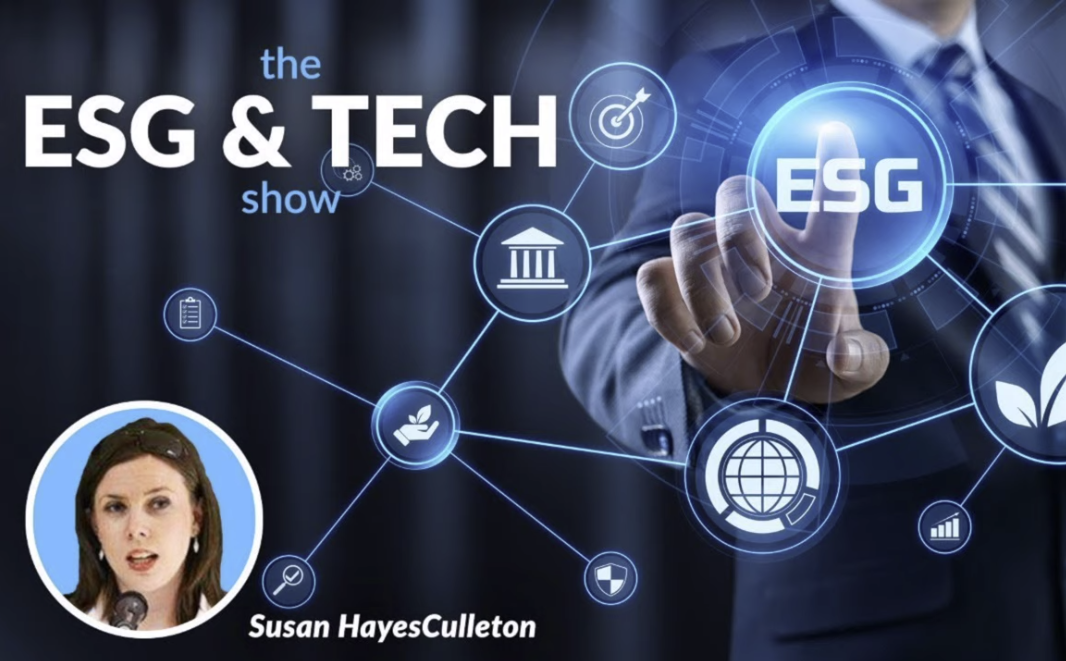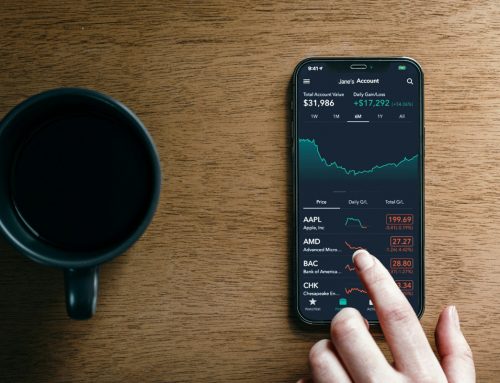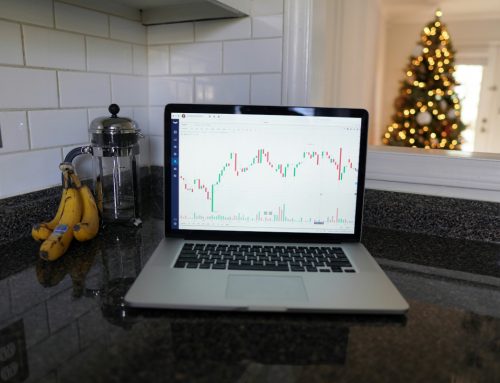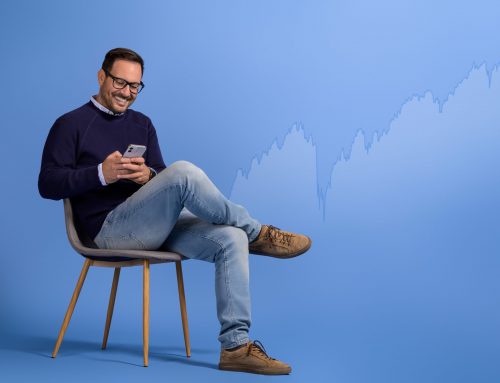Five ESG & Tech Trends that Shaped 2021
In the final episode of the, I focused on the five key trends that have defined 2021. Here is a snapshot of what we discussed:
- Climate fintech
I think 2020 was the year that truly wanted to “shop local”. There was a sense of community, wanting to help small businesses through a difficult year and our relationship with space changed dramatically during the lockdown. However, with COP26 and a plethora of other things, 2021 could well see the embryonic trend of “climate fintech”. This concept is centered around using our everyday spending to help the environment. For example, in August, the first event sustainability-focused consumer financial services provider in the public markets happened when Aspiration announced plans to go public through a special purpose acquisition company (SPAC) merger that valued it at $2.3 billion. In the company’s latest press release, it noted that its year to date September 2021 Revenue of $62.1 Million Compared to $9.3 Million for the First Three Quarters of 2020. This represents a 570% Year-Over-Year Increase. There is such a big business opportunity for companies who can align an environmental objective with people’s everyday life. At Sustain Social last week, Randeep Somal quoted “Bloomberg New Energy Foundation (BNEF) highlights that between $92 trillion – $173 trillion required in spending to reach net zero. The UK alone is £1.5 trillion.” They are phenomenal numbers!
Some sectors are going to be better placed than others to absorb the opportunities of 2022. It’s a very simple technique to examine which sectors and industries are moving the fastest right now. Go to “Viewer”, “Industry Viewer” and then rank the list by RT – “Relative Timing”. This will bring the fastest moving industries to the very top. Of course, you can do the very same with the Sector Viewer to bring the fastest moving sectors to the top.
At the time of writing in Europe, Personal (Cosmetics), Transportation (Equipment/Manufacturing), Building (Products/Miscellaneous), Business Services (Leasing), Metal Products (Pipe/Fabrication/Miscellaneous), Insurance (General), and Retail (Mail Order/Direct) were the those chosen industries where their Relative Timing is bouncing between 1.14 -1.16.
Therefore, if you’re reading the news and you hear about exciting opportunities in one sector or industry, put it to the VectorVest test first and then, drill down by double-clicking on the stocks that comprise it to learn more.
- Robo Advisor
In a previous episode, I explained at length how Robo Advisor works. In essence, you fill out a questionnaire and then an algorithm puts forward a portfolio based on the insights you share about yourself. It generally populates the portfolio with ETFs, but the whole idea is that the algorithm does the stock/fund picking for you. In 2021, we’ve seen some Robo Advisors incorporate an ESG angle into them and even seen some focus solely on the theme. For example, Earthfolio is a sustainability Robo-Advisor. Personal Capital is a US-only RoboAdvisor that chooses ESG stocks. Ellevest specializes in companies owned by women and under-represented communities. For me, this represents two key points. The first is that it is a clear response to consumer demand. The second one is that when you put your Robo Advisor in the driving seat of making decisions for you, it will continue making those decisions until you tell it otherwise. As a result, the more money that is added to these Robo Advisor accounts (which is predicted), the more ESG-based decisions will be made.
In that aforementioned piece, I pointed out how VectorVest subscribers are more likely to take matters into their own hands to build out a search that suits their investing style. If you’re somebody that is new to our system or has been here for quite some time, it’s well worth your while to check out the searches that are pre-built for you in our folders tailored for different approaches to investing and trading.
Click on “Unisearch” and then on the left-hand side, check out the “Searches” folders. During my travels across Belgium, I have found that many investors there gravitate towards the Prudent folder. I attended the “Trade Like A Pro” course in North Carolina and found most people there were interested in the Candlesticks and Candlesticks folders. As the Green Light Buyer-led to the Confirmed Up Call following the major drop in the March 2020 crash, lots of people rushed towards the “Bottom Fishing” folder, and when meeting people at various exhibitions in America, I tended to meet those who enquired about the “Aggressive” folder.
With VectorVest, you get the best of both worlds – the “Robo” doing the work of sorting through thousands of stocks and the “advisor” being your kind self who also knows your style better than anybody!
- Demographic Drivers
We often hear about the loud voice of Gen Z when it comes to its passion for sustainability. However, when it comes to those who take these considerations into account when making investment decisions, according to a recent CNBC piece “About one-third of millennials often or exclusively use investments that take ESG factors into account, compared with 19% of Gen Z, 16% of Gen X and 2% of baby boomers”. If we stop there for a moment and then question the likelihood that the influence of this age group is going to grow over time. Naturally, with inflation and the growing need for talent, we might say that it’s highly likely that their wages will rise over time, but what about their propensity to invest a greater share of their income? Bloomberg considered this from the point of view of student debt, homeownership, and retirement planning. In particular, the piece quotes “48% of 26- to 39-year-olds are homeowners today compared with 52% in 1989,” 86% of millennials have some kind retirement plan, compared with 73% of boomers at their age” and “Millennials have almost twice as much debt as their parents did at their age”. Does this suggest then those millennials are poorer than their parents? Instead, I think it’s worth considering a different angle. Millennials have invested more in their ability to be financially stable and wealthy looking into the longer term. They have been in education longer, have put money into their pension earlier, and have rented in areas closer to the higher-paying urban jobs to accelerate career progression. Therefore, when you put this as well as their predilection for ESG investing together, it’s a powerful combination.
Like millennials, we’ve all become more adept at using technology and therefore, you can maximize your usage of some of the cool tech features in the program. For example, you can customize your trading system on Backtester. Click on that tab and select “Create a new Backtest” before choosing “Build a Custom Trading System”. You will be then guided to pick a market timing system (with explanations of them along the way), what you want to do when your market timing system points out the market is bullish (i.e. choose the top ten stocks of Hot Smoothies) and what to do when your market timing system is bearish (i.e. go to cash). You can tweak different elements along the way so that your system is tailored for you. Arising from that, you can look forwards or backward. Going forward, you can set up alerts to let you know when things are changing (e.g. your marketing timing system has noted a change or a stock now meets your criteria) or you can look back by running a backtest.
- Data Data Everywhere!
Over the past year, I’ve noticed more and more ESG information available through my fintech apps and websites. If I log into my stockbroking account, I can see the sustainability measures of my portfolio, the exposures of each company to non-ESG areas and I can make decisions accordingly. If I look at the iShares website to evaluate my ETF choices, I can also see ESG rating from a variety of perspectives. Companies are now being pushed into being more transparent and there are greater expectations set for this purpose both from a regulatory as well as cultural point of view. One of the key things that stood out a mile from the Sustain Social conference was that some data providers disagree with each other. Some companies say that a certain stock has positive ESG KPIs while others offer a very different analysis. Where is one to turn in this situation? On another note, there is growing cynicism that certain companies aren’t as pure or green as they purport to be but simply want to be seen that way so that they can absorb the money that is looking for this sort of home. The European Union taxonomy is an example of a supra-national effort to harmonize this grey area.
I remember presenting to an investment club in the Netherlands and saying to them that we focus on “what a stock is worth, how safe it is and whether it’s a buy, sell or hold”. Many laughed and said, “if only it was that easy”. However, using the RV, RS, and RT, it is. The simplicity of these three indicators is also their beauty. Relative Value points out long-term price appreciation potential and I delivered a deep dive on this in a recent webinar. Relative Safety examines consistency and predictability of financial performance. Relative Timing considers the direction, magnitude, and dynamics of the share price. Therefore, despite the sheer amount of data that is available on every stock, etc, you can narrow your focus nicely down as far as you want using the Stock Viewer. Open up “Viewer”, choose “Stock Viewer” on the left, and put the name of a company into the search bar. Right-click on it as soon as it comes up and chooses “View Full Stock Analysis Report”. You will get the full detail thereof of all you need to know about the company and have the further benefit of using this format to create clear like-for-like comparisons across all your stocks.
- Differing costs of capital
Based on all the above, investors (both retail and institutional) have become more discerning. They’re attributing different costs of capital to different assets. For example, the FT points out a 0.05% “greenium” i.e. green bonds are 5 bps cheaper when compared to traditional bonds. However, what happens when it’s more complex than what a single metric can demonstrate? For example, a defense company is likely to be involved in activities that harm human life and naturally, this is “ESG bad”. They might also be working on cutting-edge cyber activities to prevent harmful hacks and preserve credibility in the virtual systems that we use progressively more and more… and that’s “ESG good”. The financial markets are a web of intricate interactions and of course, the human mind wants efficiency but when it comes to picking a company’s environmental, social, and governance reputation into a number, one would want to do so with care.
There are two indicators that I like to look at in the VectorVest system that tell a story about the cost of capital. The first is the PE ratio and the second is GPE.
The P/E is the Price to Earnings Ratio and as per the VectorVest system, “P/E shows the dollars required to buy one dollar of earnings”. Of course, this also translates to the equivalent of a euro of earnings, etc. If we take a specific example, Hapag Lloyd which trades as HLAG.DE has a P/E of 5.72. VectorVest goes on to say what The average P/E of all the stocks in the VectorVest database is at the time so that you have a frame of reference. This is a metric of how to compare the cost that investors are charging for their capital.
The second one is called GPE (Growth to P/E Ratio). This compares the growth of the earnings to the P/E ratio. Therefore, if a company is growing at a phenomenally fast pace but is charging an exorbitantly high PE ratio, the GPE will spot it. VectorVest goes on to explain that “A stock is commonly considered to be undervalued when GPE is greater than 1.00.” For example, Kingspan, which trades as KRX.IR has a GPE rating of 0.72.
2021 certainly had lots of interesting experiences, new developments, and innovative technologies that crafted it to be the year that was. With these five trends guiding the ESG & Tech future path, let’s see what 2022 has in store!








Leave A Comment